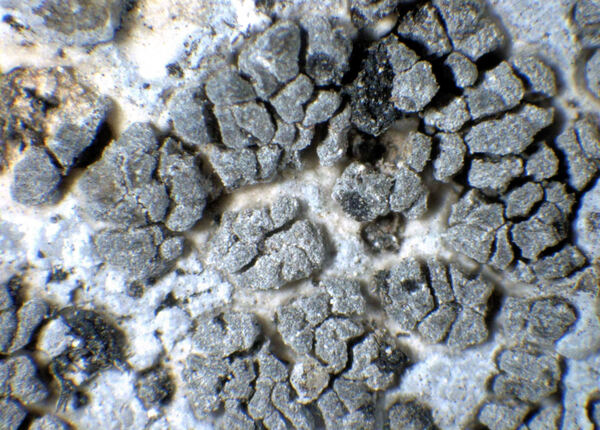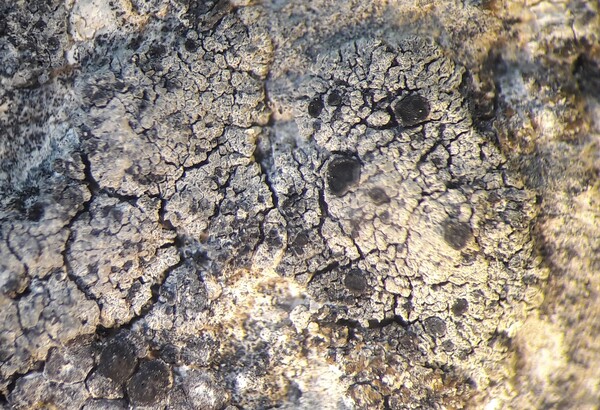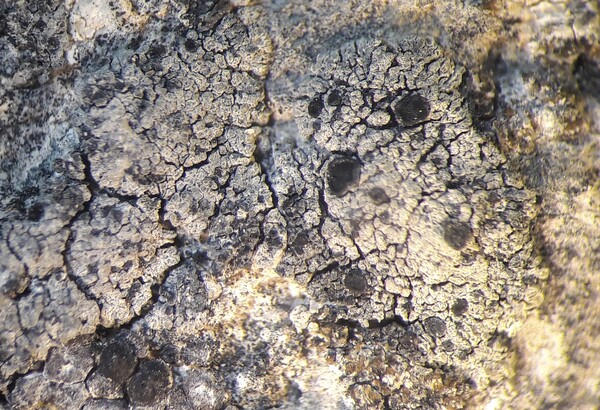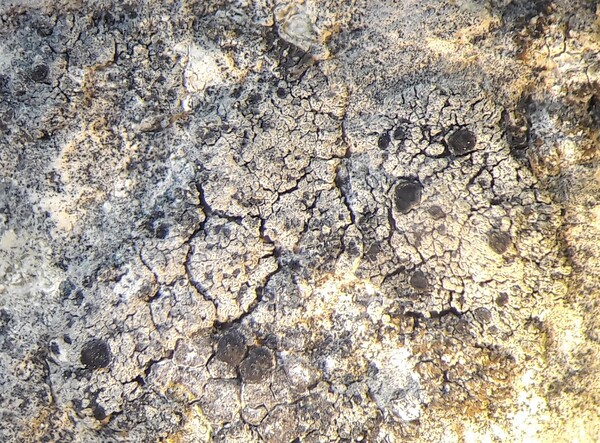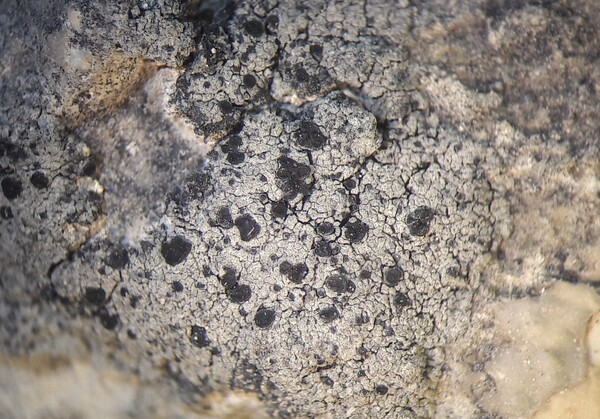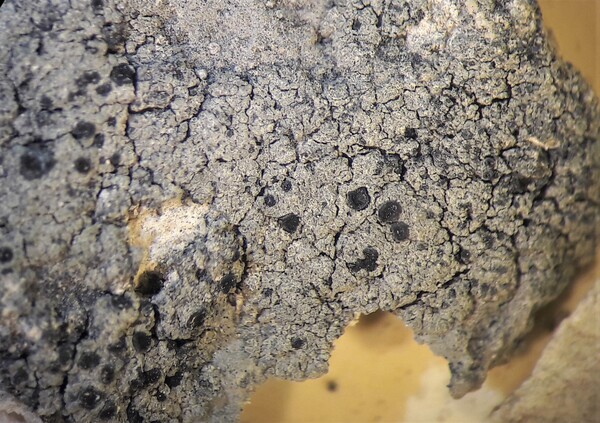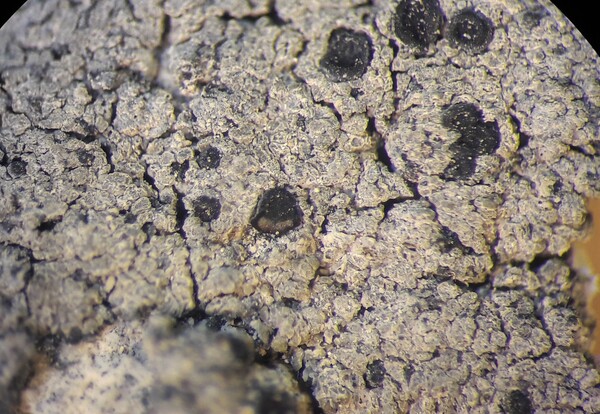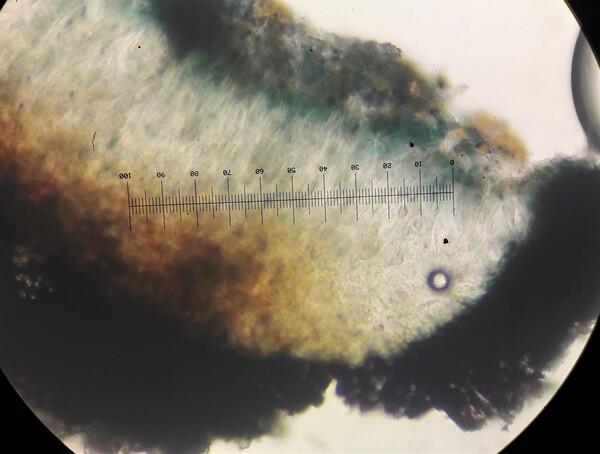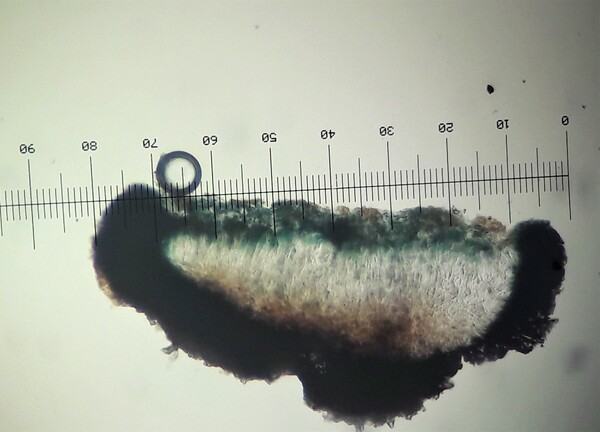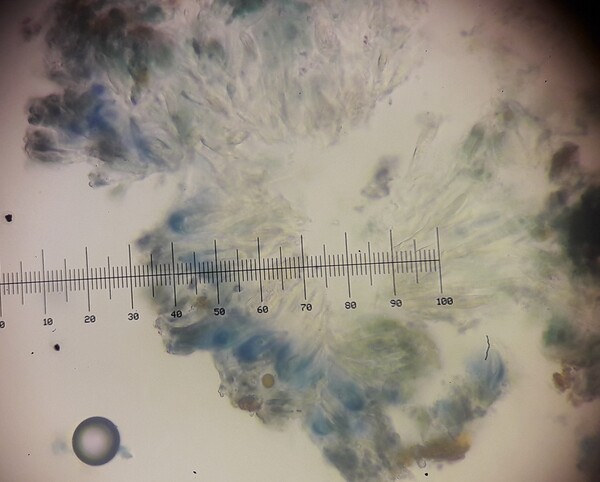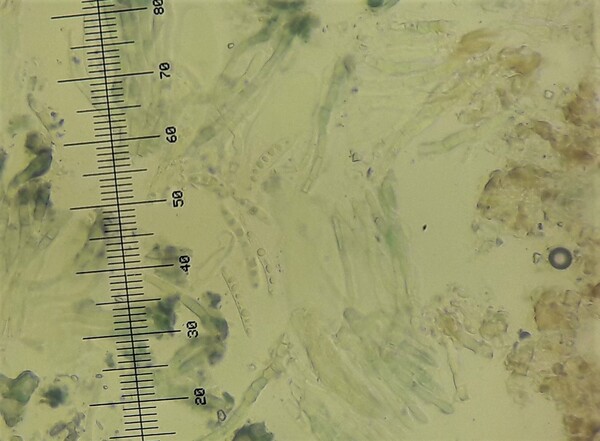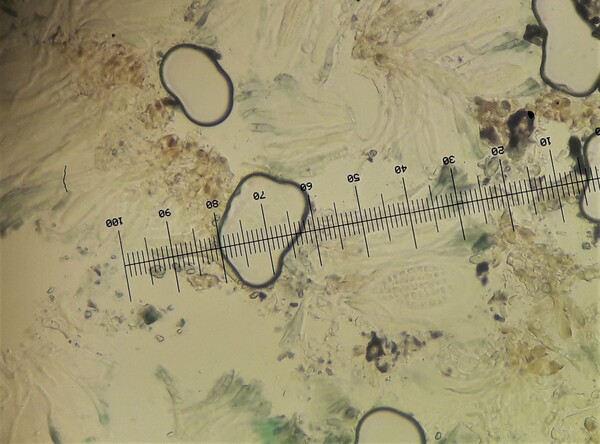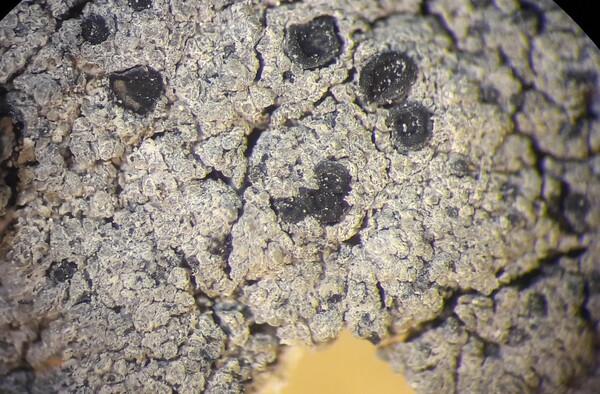Placynthium garovaglii (A. Massal.) Malme
Lich. Suec. Exs., fasc. 30: nr. 743, 1918. Basionym: Racoblenna garovaglii A. Massal. - Mem. Lichenogr.: 134, 1853.
Synonyms:
Description: Thallus crustose-placodioid, up to 1.5(-2) mm thick, paraplectenchymatous throughout, forming up to 15(-20) mm wide rosettes, black when dry, but densely white to bluish-grey pruinose due to numerous small crystals of calcium oxalates, dull grey-brown when wet, usually without a distinct prothallus. Central parts consisting of strongly convex, erect, 0.1-0.2(-0.4) mm wide outgrowths which sometimes fall off leaving concentrical semi-circles of marginal lobes. Lobes contiguous, usually convex, simple or sparingly branched, usually 0.5-1(-2) mm long and wide, often rugose or striate, closely adhering to the substrate except at the ends. Apothecia rather common, biatorine, sessile, up to 1 mm across, black but sometimes bluish-pruinose. Epithecium blue-green; hymenium colourless, I+ blue; paraphyses distinctly septate, sparingly branched; hypothecium pale brown. Asci 8-spored, apically thickened, with a distinct amyloid tube structure in the apex. Ascospores (2-)3-septate, hyaline, elongate-fusiform, (20-)25-35(-53) x 3-5(-6) μm. Pycnidia to 250 μm diam., the wall dark blue near the ostiole. Conidia bacilliform, (5-)7-9 x c. 1 μm, straight or slightly curved, Photobiont cyanobacterial, Scytonema-like. Spot tests: all negative. Chemistry: without lichen substances.
Growth form: Crustose
Substrata: rocks
Photobiont: cyanobacteria, filamentous (e.g. Nostoc, Scytonema)
Reproductive strategy: mainly sexual
On otherwise dry surfaces with short periods of water seepage after rain
Commonnes-rarity: (info)
Alpine belt: extremely rare
Subalpine belt: very rare
Montane belt: rather rare
Dry submediterranean belt: rare
Humid submediterranean belt: rare
Padanian area: absent
pH of the substrata:
1 2 3 4 5
Solar irradiation:
1 2 3 4 5
Aridity:
1 2 3 4 5
Eutrophication:
1 2 3 4 5
Poleotolerance:
0 1 2 3
Altitudinal distribution:
1 2 3 4 5 6
Rarity
absent
extremely rare
very rare
rare
rather rare
rather common
common
very common
extremely common
Loading data...
Occurrence data
Predictive map
Growth form: Crustose
Substrata: rocks
Photobiont: cyanobacteria, filamentous (e.g. Nostoc, Scytonema)
Reproductive strategy: mainly sexual
On otherwise dry surfaces with short periods of water seepage after rain
Commonnes-rarity: (info)
Alpine belt: extremely rare
Subalpine belt: very rare
Montane belt: rather rare
Dry submediterranean belt: rare
Humid submediterranean belt: rare
Padanian area: absent
pH of the substrata:
| 1 | 2 | 3 | 4 | 5 |
Solar irradiation:
| 1 | 2 | 3 | 4 | 5 |
Aridity:
| 1 | 2 | 3 | 4 | 5 |
Eutrophication:
| 1 | 2 | 3 | 4 | 5 |
Poleotolerance:
| 0 | 1 | 2 | 3 |
Altitudinal distribution:
| 1 | 2 | 3 | 4 | 5 | 6 |
Rarity
absent
extremely rare
very rare
rare
rather rare
rather common
common
very common
extremely common
Loading data...
Occurrence data
Predictive map


